This article was medically reviewed by Luba Lee, FNP-BC, MS. Luba Lee, FNP-BC is a Board-Certified Family Nurse Practitioner (FNP) and educator in Tennessee with over a decade of clinical experience. Luba has certifications in Pediatric Advanced Life Support (PALS), Emergency Medicine, Advanced Cardiac Life Support (ACLS), Team Building, and Critical Care Nursing. She received her Master of Science in Nursing (MSN) from the University of Tennessee in 2006.
There are 26 references cited in this article, which can be found at the bottom of the page.
wikiHow marks an article as reader-approved once it receives enough positive feedback. In this case, 87% of readers who voted found the article helpful, earning it our reader-approved status.
This article has been viewed 169,662 times.
Cuts in the mouth can occur from brushing your teeth, eating, biting the inside of your mouth, or having dental braces. Most cuts are minor and will heal on their own. However, they can be painful or turn into white sores. To heal a cut in your mouth, avoid irritating foods, gargle with salt water, use an ointment, or try a natural antibacterial agent.
Things You Should Know
- If your cut is bleeding, rinse your mouth with cool water, use gauze to apply pressure on the cut for 15 minutes, and press a cold compress on your cut to slow the bleeding. [1]
- Ointments[2] , warm salt water,[3] honey,[4] baking soda paste,[5] coconut oil,[6] and zinc[7] can all ease your pain and help heal your cut.
- To limit your pain, avoid mouth wash and spicy foods, drink water when your mouth gets dry, and if you have braces, use wax to shield your cut from sharp metal.[8] [9]
Steps
First Aid for Bleeding Wounds
-
1Rinse your mouth with cool water. If the cut in your mouth is bleeding, start by rinsing your mouth with cool water for a few minutes. Swish the water around in your mouth, making sure to swish it around the area with the cut. This helps remove the blood, wash away any dirt or debris in your mouth, and stop the bleeding.[10]
-
2Apply pressure to the wound for 15 minutes. If rinsing your mouth doesn’t stop the bleeding, you can apply pressure to the cut with a piece of gauze. Gently press the gauze against the cut for a few minutes to stop the bleeding.[11]
- Don’t peek under the gauze before 15 minutes is up, since this could disturb the clot that’s forming and make the bleeding start up again. If the gauze gets soaked through, just put a fresh piece on top of it.
- If the bleeding is severe or doesn’t stop after 15 minutes, get medical help.
- If you have bleeding inside your lip, you can also apply pressure by gently pressing the wound against your teeth or gums from the outside.
Advertisement -
3Use a cold compress to slow the bleeding. Pressing a cold compress or ice against the bleeding cut can also help stop the bleeding. Wrap the ice in a cloth and put it against the cut. This helps reduce inflammation and constrict the blood vessels, which will help stop the bleeding.[12] [13]
- You can also suck on an ice cube or popsicle to slow the bleeding and soothe the area.
- Ice is also great for reducing pain and swelling.
Daily Care
-
1Protect the wound with an ointment. You can buy ointments that are made to treat and soothe oral sores, such as Orabase or Anbesol. These ointments contain pain relievers and can also protect the cut while it’s healing. They may also reduce swelling at the site of the wound.[14]
- When using oral ointments, make sure to read the directions carefully.
-
2Gargle with warm salt water. Using salt water is one of the most common ways to heal a mouth cut. Mix 1 teaspoon (6 g) of salt with 1 cup (240 mL) of warm water. Stir until the salt is completely dissolved. Swish the solution around in your mouth, making sure you pay close attention to the area with the cut. Spit out the salt water when you’re done rinsing.[15]
- Salt has antiseptic properties that can clean the cut.[16]
- It’s especially beneficial to do the salt water rinse after meals, since it helps get rid of food particles in your mouth could irritate the wound.
-
3Apply honey to promote healing and soothe pain. Honey is an antibacterial and antiseptic substance that can help boost the immune system.[17] Applying honey to the cuts in your mouth can help kill bacteria, heal the wound, and reduce pain. Place raw honey on the cut 3 times each day.[18]
- Raw, pure honey works best. You can find raw honey in most health food stores, or you may be able to get it from your local grocery store.
-
4Make a baking soda paste and dab it on the sore. Baking soda has antibacterial properties.[19] This can help kill bacteria in the cut in your mouth and promote healing, and it may also help reduce pain and irritation. Make a paste with 1 teaspoon (4 g) of baking soda and a small amount of water. Place the paste on the cut 2 to 3 times each day.[20]
- Alternatively, dissolve 1 teaspoon (4 g) of baking soda in 1⁄2 cup (120 mL) of warm water and swish it around in your mouth 2-3 times a day.[21]
- You can also try brushing your teeth with the baking soda paste, but avoid brushing the wounded area or else you may hurt it and cause it to start bleeding again.
-
5Swish coconut oil in your mouth for better healing. Coconut oil has antimicrobial properties, and the natural acids in the oil may help soothe and heal mouth sores. When you get up in the morning, swish 1 tablespoon (15 mL) of coconut oil in your mouth for about 20 minutes, then spit it out and rinse your mouth with a bit of warm salt water.[22]
- If your jaw starts to hurt, you don’t have to swish for a full 20 minutes. Aim for at least 5 minutes, but do whatever feels comfortable.
- While “oil pulling” is traditionally done in the morning, you can do it any time throughout the day.
-
6Ask your doctor about using zinc supplements to speed up healing. Zinc supplements may help heal certain kinds of mouth sores, such as aphthous ulcers. Try sucking on a zinc lozenge 4-6 times a day until the ulcer heals.[23]
- Before starting any new vitamin or supplement, talk to your doctor—especially if you’re taking other medications. Zinc can interact with certain antibiotics, blood pressure medications, and arthritis medications.[24]
- Taking zinc long-term can lead to a copper deficiency, so ask your doctor about taking copper supplements if you’re planning to take zinc for more than a few days.[25]
Pain Management
-
1Avoid spicy or hard foods. Certain foods may irritate the cut in your mouth. Don’t eat anything that is extremely spicy or salty, since this can sting and cause pain. You should also avoid eating hard or dry foods. Instead, eat soft, bland foods that won’t irritate the tissues in your mouth.[26]
- You can try to eat dairy products such as ice cream, tender meats, and cooked vegetables.
- Avoid acidic foods, like tomatoes and citrus fruits.
-
2Drink lots of water to avoid a dry mouth. By drinking a lot of fluids, you will keep your mouth wet. A dry mouth can cause pain and irritate the cut in your mouth.[27] Avoid beverages that may cause pain, like citrus fruit juices or acidic beverages.[28]
- Avoid alcoholic beverages because they can cause burning and irritation.
- Cold drinks, like ice water, may also help soothe pain and inflammation.
-
3Stay away from mouthwashes that contain alcohol. Don’t rinse with mouthwashes that contain alcohol because they may damage the wounded tissues in your mouth and inhibit the healing process. Instead, stick to alcohol-free washes.[29]
- Mouthwashes with hydrogen peroxide may also irritate your mouth wound, so avoid them unless your doctor or dentist advises otherwise.
-
4Limit the movement of your mouth. You can’t stop talking and using your mouth, but be more careful with the way you use your mouth while a cut is healing. Don’t open your mouth too wide. This can pull on the tissues inside of the mouth and open the cut again or delay the healing process.
- As much as possible, avoid laughing, yawning, or other actions that involve opening your mouth wide—especially if you have a fresh cut that could start bleeding again.
-
5Use wax to prevent cuts and reduce pain if you have braces. Apply orthodontic wax to the sharp outer areas of your brackets that tend to irritate the inside of your mouth. This will reduce your pain by limiting the irritation on the cut and will also prevent future cuts.[30]
- You can get orthodontic wax from your dentist’s office or from a drug store.
Expert Q&A
-
QuestionThe dentist cut the inside of my cheek badly. I have tried salt water but it stings so much. What should I do?
 Luba Lee, FNP-BC, MSLuba Lee, FNP-BC is a Board-Certified Family Nurse Practitioner (FNP) and educator in Tennessee with over a decade of clinical experience. Luba has certifications in Pediatric Advanced Life Support (PALS), Emergency Medicine, Advanced Cardiac Life Support (ACLS), Team Building, and Critical Care Nursing. She received her Master of Science in Nursing (MSN) from the University of Tennessee in 2006.
Luba Lee, FNP-BC, MSLuba Lee, FNP-BC is a Board-Certified Family Nurse Practitioner (FNP) and educator in Tennessee with over a decade of clinical experience. Luba has certifications in Pediatric Advanced Life Support (PALS), Emergency Medicine, Advanced Cardiac Life Support (ACLS), Team Building, and Critical Care Nursing. She received her Master of Science in Nursing (MSN) from the University of Tennessee in 2006.
Board-Certified Family Nurse Practitioner For pain reduction you may want to apply oral benzocaine gel, available over the counter at a drugstore. You also may want to use coconut oil to help speed up the healing process. Dissolve and swish 1 teaspoon of coconut oil in your mouth for 5-10 minutes. You can repeat the process a few times a day. Coconut oil is antibacterial, antifungal, and antiviral. It also helps with healing and soothing of the mouth mucosa.
For pain reduction you may want to apply oral benzocaine gel, available over the counter at a drugstore. You also may want to use coconut oil to help speed up the healing process. Dissolve and swish 1 teaspoon of coconut oil in your mouth for 5-10 minutes. You can repeat the process a few times a day. Coconut oil is antibacterial, antifungal, and antiviral. It also helps with healing and soothing of the mouth mucosa.
References
- ↑ https://www.stanfordchildrens.org/en/topic/default?id=cuts-and-wounds-of-the-mouth-and-lips-90-P02836
- ↑ https://www.chop.edu/conditions-diseases/cuts-and-wounds-mouth-and-lips
- ↑ https://myhealth.alberta.ca/Health/aftercareinformation/pages/conditions.aspx?hwid=abq3272
- ↑ https://www.hmpgloballearningnetwork.com/site/wounds/ahmadi-motamayel
- ↑ https://www.cancer.gov/about-cancer/treatment/side-effects/mouth-throat
- ↑ https://www.ncbi.nlm.nih.gov/pmc/articles/PMC5198813/
- ↑ https://www.wounds-uk.com/download/resource/73
- ↑ https://www.sciencedirect.com/science/article/pii/S1991790220300799
- ↑ https://www.seattlechildrens.org/conditions/a-z/mouth-injury/
- ↑ https://www.urmc.rochester.edu/encyclopedia/content.aspx?ContentTypeID=90&ContentID=P02836
- ↑ https://www.mottchildren.org/health-library/tw9012
- ↑ http://conditions.health.qld.gov.au/HealthCondition/condition/18/155/98/mouth-sores
- ↑ https://www.chop.edu/conditions-diseases/cuts-and-wounds-mouth-and-lips
- ↑ https://medlineplus.gov/ency/article/003059.htm
- ↑ https://myhealth.alberta.ca/Health/aftercareinformation/pages/conditions.aspx?hwid=abq3272
- ↑ https://www.ncbi.nlm.nih.gov/pubmed/16943065
- ↑ https://www.ncbi.nlm.nih.gov/pmc/articles/PMC3609166/
- ↑ https://rden.mosuljournals.com/article_9066_145cc38c2d797a4768c28f8b00302aee.pdf
- ↑ https://www.ncbi.nlm.nih.gov/pubmed/12017929
- ↑ https://medlineplus.gov/ency/article/003059.htm
- ↑ https://oconto.extension.wisc.edu/files/2011/02/Baking-Soda.pdf
- ↑ https://www.ncbi.nlm.nih.gov/pmc/articles/PMC5198813/
- ↑ https://www.aafp.org/afp/2000/0701/p149.html
- ↑ https://www.stlukes-stl.com/health-content/medicine/33/000999.htm
- ↑ https://lpi.oregonstate.edu/mic/minerals/copper
- ↑ https://www.lls.org/sites/default/files/National/USA/Pdf/PearlPoint/PearlPoint_Nutrition_Tips_for_Managing_Sore_Mouth__Throat__and_Tongue.pdf
- ↑ https://www.betterhealth.vic.gov.au/health/conditionsandtreatments/dry-mouth-syndrome
- ↑ https://my.clevelandclinic.org/health/diseases/21754-mouth-sore
- ↑ https://www.mskcc.org/cancer-care/patient-education/mouth-care-during-your-treatment
- ↑ https://www.sciencedirect.com/science/article/pii/S1991790220300799
About This Article
The easiest way to heal a cut in your mouth is to gargle with salt water, which will keep the area clean and speed up the healing process. To make your salt water solution, dissolve 1 teaspoon of salt in a glass of warm water. Then, swish it around in your mouth, making sure to swish around the area with the cut to help stop the bleeding. You can also treat the cut by dabbing it with apple cider vinegar twice a day to kill any bacteria and heal the wound. If you don’t fancy the taste of apple cider vinegar, try some raw honey instead, which also has antibacterial properties that can help heal the cut. To learn more, like how to deal with the pain from a cut in your mouth, scroll down.

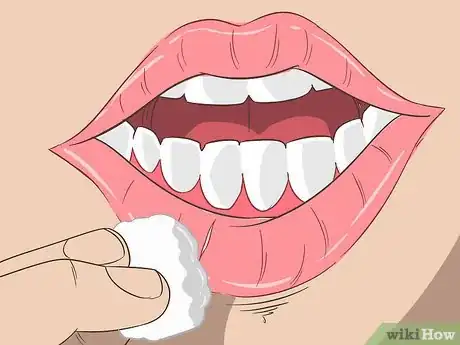
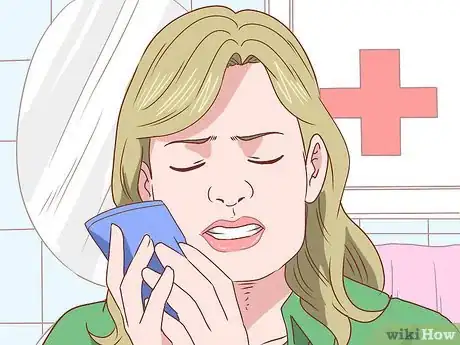
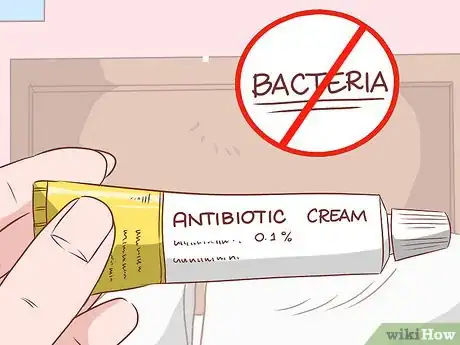
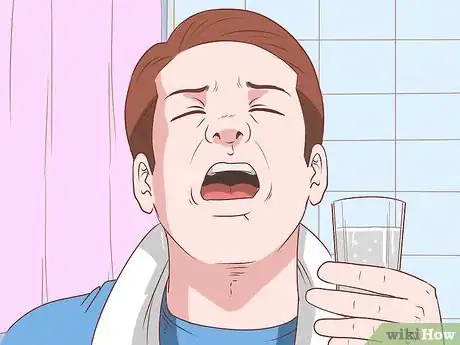
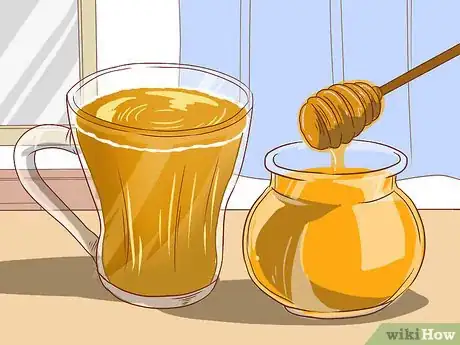
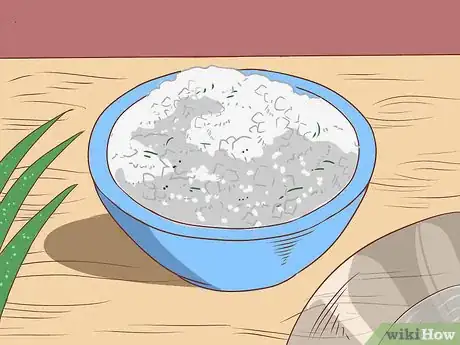
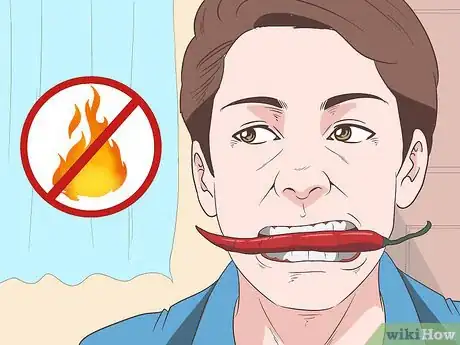
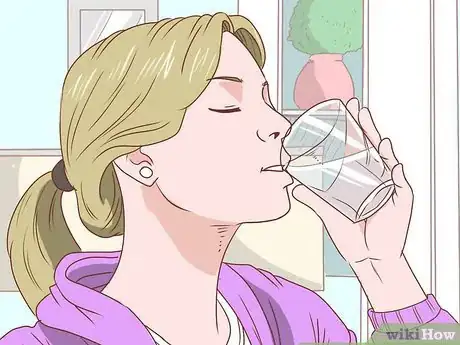
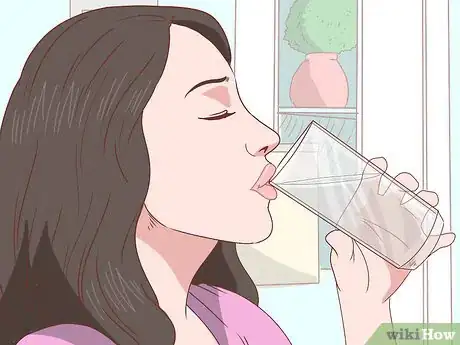
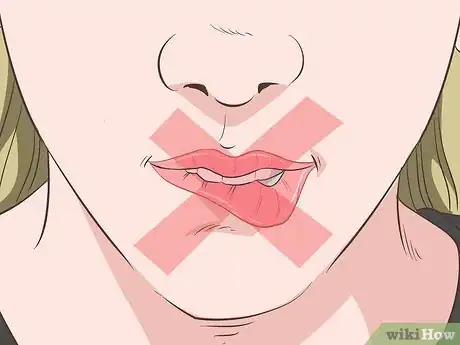
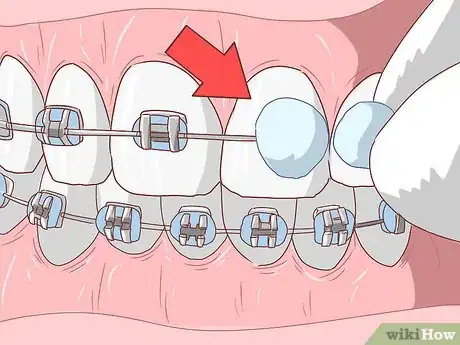
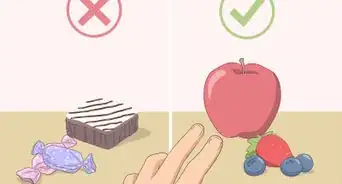

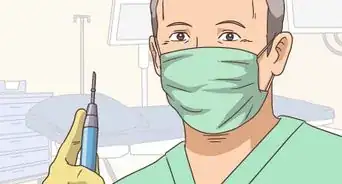


-Step-22.webp)

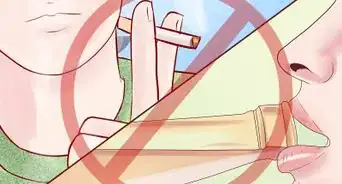





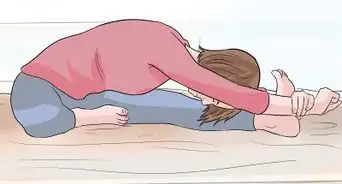










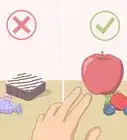
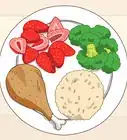





































Medical Disclaimer
The content of this article is not intended to be a substitute for professional medical advice, examination, diagnosis, or treatment. You should always contact your doctor or other qualified healthcare professional before starting, changing, or stopping any kind of health treatment.
Read More...